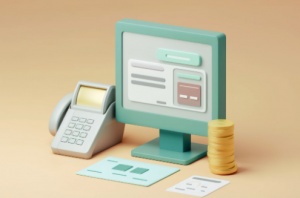When you’re freelancing, you’re the CEO, the accountant, the marketer, and sometimes even the intern. But one thing that should never be optional is invoicing like a pro. And no, sending a screenshot of a Notepad file with your rate scribbled in doesn’t count.
If you want to get paid (and fast), you need an invoice that’s clear, clean, and confidence-boosting. Think of it as your digital handshake — it should say, “Hey, I’m professional, and yes, I expect payment on time.”
But let’s be real: most freelancers didn’t get into the game for the admin work. That’s where invoice templates swoop in to save your time and maybe even your dignity.
What Makes a Freelancer Invoice Different?
Unlike big companies that have entire accounting departments (and probably someone named Carl who loves spreadsheets), freelancers need invoices that are simple but powerful. Yours should include everything the client needs to pay you without a back-and-forth email exchange about what “due upon receipt” means.

Freelancer invoices often include:
- A breakdown of services by task or hourly work
- Personalized branding (even a simple logo or color scheme goes a long way)
- Flexible payment terms (Net 7, Net 14, or immediate)
- Space for notes (because sometimes you want to say thanks or drop your PayPal link)
Unlike corporate templates, yours should feel human — but still look polished. It’s a balance between personality and professionalism.
Best Platforms Offering Freelancer Invoice Templates
Sure, you could make your own template in Word and reuse it forever — but why struggle when there are tools that practically build it for you? Here are a few platforms that take the guesswork out of invoicing and let you focus on doing what you actually enjoy.
1. Wave
Totally free. Seriously. Wave is a gem for freelancers on a budget. You get slick templates, custom branding, and it even lets you track if a client has viewed the invoice. It supports credit card payments (with a fee, of course), and you can send recurring invoices if you’re working with a retainer client.
Bonus: You get to look super legit without spending a dime.
2. Bonsai
If you want the full freelancer toolkit — contracts, time tracking, proposals, and invoicing — Bonsai has your back. Their invoice templates are clean and professional, and you can automate reminders (because chasing clients for money isn’t fun).
There’s a monthly fee, but if invoicing gives you a headache, the automation alone might be worth it.
3. Google Docs + Add-ons
For the minimalist who just wants to get it done, Google Docs (or Sheets) has dozens of invoice templates ready to go. Just plug in your info, save as PDF, and send it off. You can also connect it with Google Forms or Zapier to automate more of your process.
It won’t track payments automatically, but for a quick-and-dirty invoice? Still solid.
What to Include in Your Invoice (Don’t Skip These)
Before you hit “send,” triple-check that your invoice includes all the essentials. Yes, it’s basic — but even the best freelancers forget one of these when rushing.
Here’s a go-to checklist:
- Your name or business name
- Contact info (email, phone, website)
- Invoice number (keep it sequential)
- Client name and contact info
- Date of invoice and due date
- List of services provided, with rates
- Total amount due
- Payment methods accepted
- Optional: thank-you note, late fee policy
If any of these are missing, don’t be surprised if your payment gets “lost in the system.”
Pro Tips for Getting Paid Faster
Want your money sooner? Then make the whole experience easy for the client. That means no weird file formats, no confusing item descriptions, and no excuses.

Here’s how to speed things up:
- Send invoices as PDFs, not .docx or .pages. Everyone can open a PDF.
- Use clear subject lines in emails: “Invoice #103 – Jane Smith Design – Due June 15.”
- Mention late fees up front. You don’t have to enforce them right away, but they show you’re serious.
- Offer multiple payment methods — PayPal, bank transfer, Wise, even Venmo if that’s your thing.
- Follow up firmly but politely. Set a calendar reminder and resend after 3–5 business days if it’s crickets.
Why Design Matters More Than You Think
Look, nobody’s saying your invoice needs to win a design award. But a clean, easy-to-read layout makes you look polished — and that translates into faster trust, better clients, and fewer payment delays.
Even just using a nice font (please, not Comic Sans), a touch of color, and your logo can elevate your brand. Think of your invoice as one last brand touchpoint. Would you rather it whisper “organized pro” or scream “I made this in 30 seconds between Zoom calls”?
Templates You Can Steal (Legally)
If you’re still using a DIY Word doc from 2016, it’s time for an upgrade. These templates are free to use, easy to customize, and look like you actually know what you’re doing:
- Canva Invoice Templates – Visually stunning and fully customizable
- Google Sheets Freelance Invoice – Simple, editable, cloud-based
- FreshBooks Free Invoice Generator – Just fill in the blanks and download
- Zervant and Invoice Simple – Mobile-friendly and freelancer-focused
Pick one, personalize it a bit, and save a master version so you’re not starting from scratch every time.
You Deserve to Get Paid (On Time, Every Time)
You’re not just a “freelancer” — you’re a small business in sneakers. And businesses deserve to be paid fairly and on schedule. The invoice you send isn’t just a formality. It’s a signal. It says: “I did the work. Here’s the value. Let’s keep it clean and professional.”
So don’t leave money on the table because of a sloppy invoice. Use a solid template, double-check the details, and set up a system that works for you. Whether you’re designing websites, writing copy, or consulting clients, your time is valuable — and your invoice should reflect that.